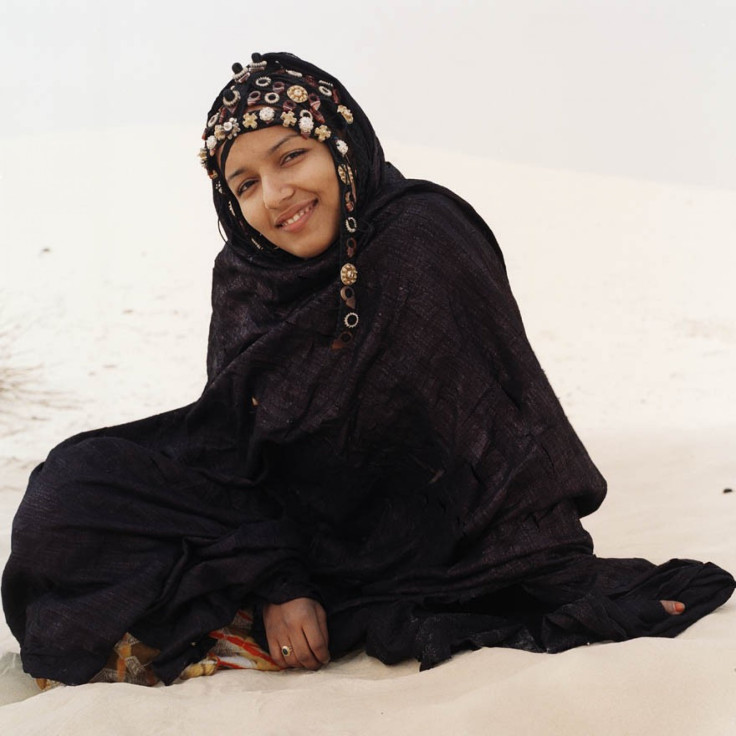Azawad: The Tuaregs’ Nonexistent State In A Desolate, Poverty-Stricken Wasteland
ANALYSIS

Mali -- which witnessed the overthrow of a democratically elected government by a military coup last month, as well as a burgeoning separatist movement -- is one of the poorest, most desolate places on earth.
The nation's new interim president, Dioncounda Traore, who is to serve for 40 days until official elections can be held according to the constitution, has threatened to launch a “total war” against Tuareg rebels and Islamist militants, who control most of the northern desert region.
So what kind of place is Mali and who are the Tuaregs?
Roughly double the size of Texas, Mali -- which gained independence from France in 1960 -- has a population of just under 15 million. The West African nation also has one of the world’s highest birth rates (45.15 births/1,000 population) and the highest infant mortality rates (109.08 deaths/1,000 live births), due primarily to grinding poverty and poor health care, according to the CIA World Factbook.
There's only one physician for every 20,000 Malians (again, one of the lowest figures on the planet). More than half the population doesn't have access to safe drinking water or sanitation facilities.
The risk of Malians contracting infectious diseases is extremely high, and more than one-fourth of children under the age of five are underweight. The average person in Mali will live about 53 years, among one of the lowest life-expectancy rates in the world; fewer than half the population can read and write.
Less than 4 percent of the country has arable soil, although 80 percent of the population is involved in the dominant agricultural sector.
As for the economy, Mali has no oil or gas reserves, but it does have some gold, phosphates, kaolin, salt, limestone, uranium and gypsum deposits. The country is also known to possess bauxite, iron ore, manganese, tin, and copper deposits, but these haven't been exploited to any degree.
Consequently, Mali is heavily dependent upon foreign aid.
A recent report by the International Fund for Agricultural Development said: “The national poverty rate was estimated to be over 43 percent in 2010. Chronic food insecurity and malnutrition continue to be endemic throughout the country. This situation was aggravated by the global fuel and food crisis of 2008, which led to a sudden increase in food prices that has remained to this day.”
IFAD added: “In recent years, Mali has urbanized rapidly, but nearly 70 percent of the population still lives in rural areas, where poverty is more prevalent and the vast majority of people rely on agriculture for food and income. Rural poverty is characterized by isolation, lack of assets and income, and inadequate access to drinking water, schooling and health care. … Poverty is widespread throughout rural Mali, although the rural inhabitants of the central and northern Sahelian and Sahelo-Saharan areas are Mali’s poorest and most vulnerable populations. They are predominantly farmers and agro-pastoralists who practice dry land subsistence farming to feed their families, and contend with a poor and increasingly degraded resource base as well as limited access to basic services.”
Mali, IFAD warned, faces not only the severe threats of drought, recurring famines and civil war, but also suffers from the “depletion and degradation of soils, forests and water, as a result of over-grazing and the pressures of a growing population,” suggesting starvation for a great many of its people is imminent.
Adding to Mali’s insurmountable problems is the threat of civil war, prompted by an insurgency in the north by the minority Tuareg people.
The Tuaregs are an ancient nomadic people who have traversed the Sahara Desert for thousands of years and are spread out across Libya, Algeria, Niger and Burkina Faso, as well as Mali. They once controlled the trade of gold and salt across the vast desert expanses.
Distinct from Mali’s majority black African population, Tuaregs are more akin to the Berber peoples of North Africa and tend to have lighter complexions and have long complained of discrimination from Bamako, the capital in the southern part of the country.
Tuaregs are also renowned fighters -- indeed, they were so prized as warriors that Libya’s Moammar Gadhafi employed thousands of them for his private army. Upon Gadhafi’s defeat, however, Tuareg soldiers – well-trained and heavily armed – found themselves without employment and returned to their homeland in northern Mali.
The Tuaregs, who have staged a number of failed rebellions over the centuries against established governments, have never had a state of their own.
Now, a group calling itself the National Movement for the Liberation of Azawad (MNLA), is seeking to form an autonomous state in the northern part of the country called Azawad.
Indeed, just last week, the official website of the MNLA declared the “independence” of Azawad from Mali proper. In the city of Gao, the leader of the MNLA movement, a man named Bilal Ag Acherif, signed the Azawadi Declaration of Independence, thereby formally announcing the formation of an independent state.
“We, the people of the Azawad proclaim the irrevocable independence of the state of the Azawad starting from this day, Friday, April 6, 2012,” MNLA said on its website.
The declaration was immediately rejected by the African Union, the European Union and neighboring Algeria, among other international bodies.
While the “state of Azawad” may be a fantasy, the likelihood of a bloody civil war remains a sobering possibility. And if reports that a huge cache of Libyan arms have been smuggled into Mali are true, such a conflict could lead to tragic bloodshed across this forgotten and desolate desert land.
© Copyright IBTimes 2024. All rights reserved.





















